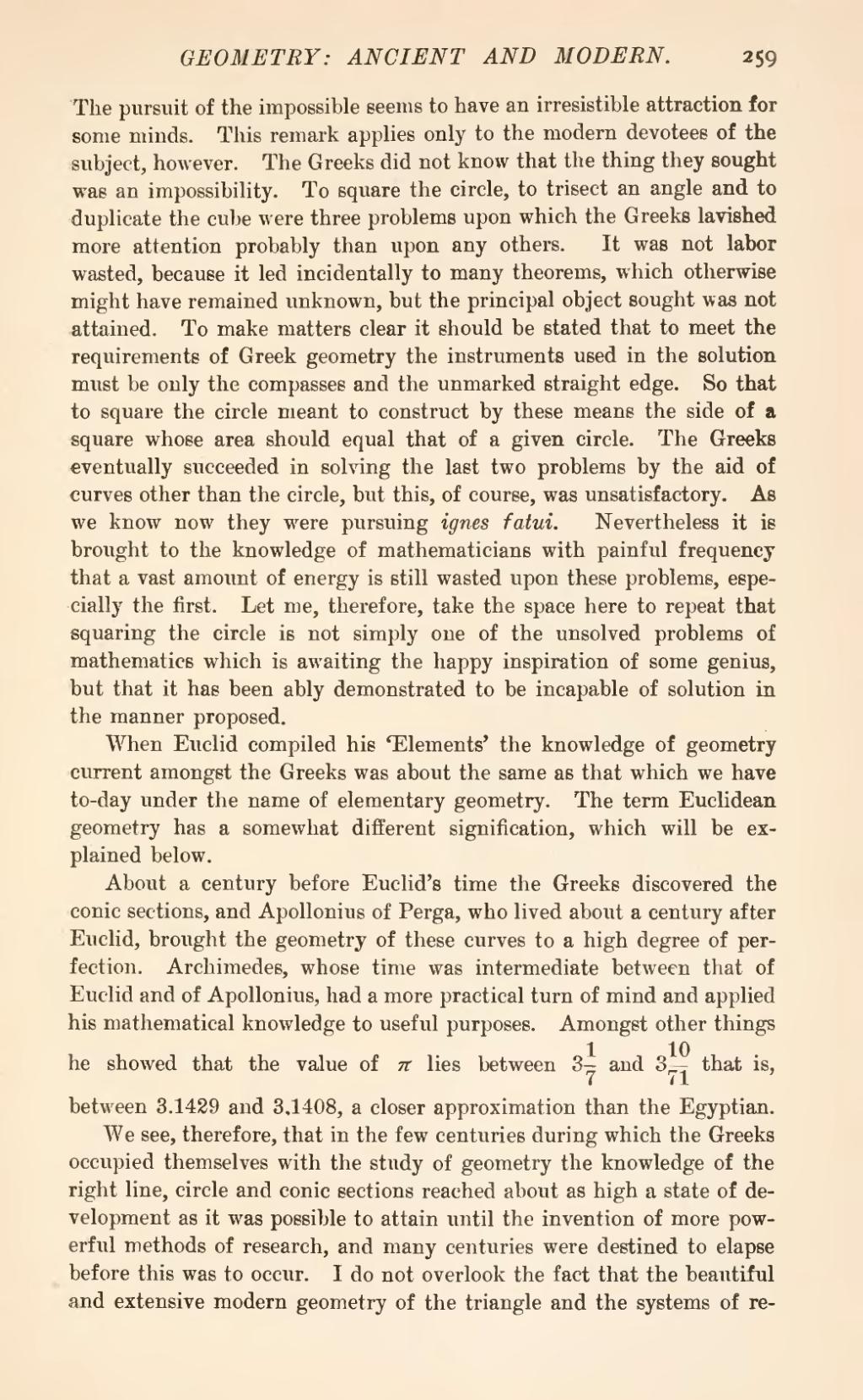The pursuit of the impossible seems to have an irresistible attraction for some minds. This remark applies only to the modern devotees of the subject, however. The Greeks did not know that the thing they sought was an impossibility. To square the circle, to trisect an angle and to duplicate the cube were three problems upon which the Greeks lavished more attention probably than upon any others. It was not labor wasted, because it led incidentally to many theorems, which otherwise might have remained unknown, but the principal object sought was not attained. To make matters clear it should be stated that to meet the requirements of Greek geometry the instruments used in the solution must be only the compasses and the unmarked straight edge. So that to square the circle meant to construct by these means the side of a square whose area should equal that of a given circle. The Greeks eventually succeeded in solving the last two problems by the aid of curves other than the circle, but this, of course, was unsatisfactory. As we know now they were pursuing ignes fatui. Nevertheless it is brought to the knowledge of mathematicians with painful frequency that a vast amount of energy is still wasted upon these problems, especially the first. Let me, therefore, take the space here to repeat that squaring the circle is not simply one of the unsolved problems of mathematics which is awaiting the happy inspiration of some genius, but that it has been ably demonstrated to be incapable of solution in the manner proposed.
When Euclid compiled his 'Elements' the knowledge of geometry current amongst the Greeks was about the same as that which we have to-day under the name of elementary geometry. The term Euclidean geometry has a somewhat different signification, which will be explained below.
About a century before Euclid's time the Greeks discovered the conic sections, and Apollonius of Perga, who lived about a century after Euclid, brought the geometry of these curves to a high degree of perfection. Archimedes, whose time was intermediate between that of Euclid and of Apollonius, had a more practical turn of mind and applied his mathematical knowledge to useful purposes. Amongst other things he showed that the value of π lies between 31/7 and 310/71 that is, between 3.1429 and 3,1408, a closer approximation than the Egyptian. We see, therefore, that in the few centuries during which the Greeks occupied themselves with the study of geometry the knowledge of the right line, circle and conic sections reached about as high a state of development as it was possible to attain until the invention of more powerful methods of research, and many centuries were destined to elapse before this was to occur. I do not overlook the fact that the beautiful and extensive modern geometry of the triangle and the systems of re-

